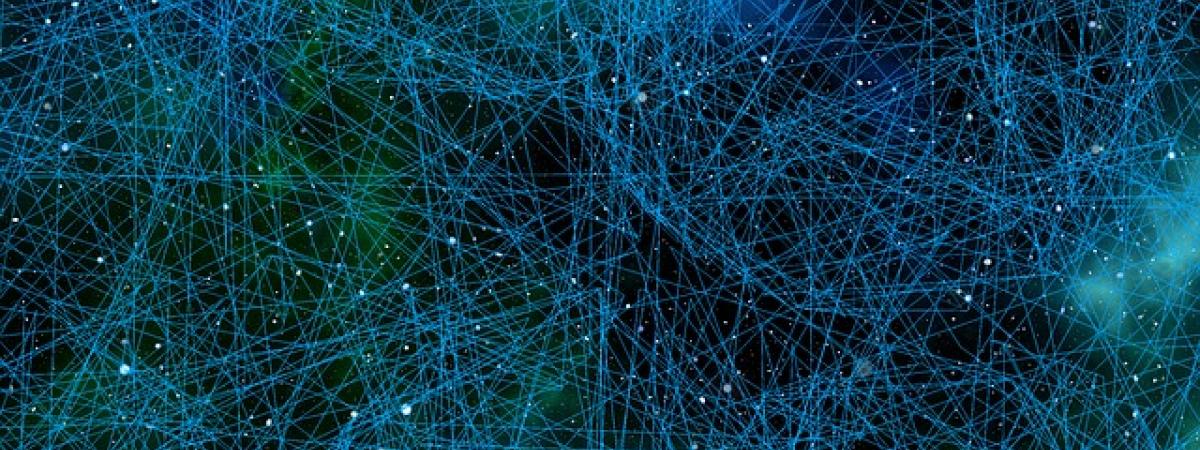How are memories made?

To learn something is to commit it to long-term memory, ready for it to be retrieved when needed. Without memory, we could not learn anything, and “every day would be alone in itself”.
Making connections
We are born with almost all the brain cells we will ever have – about 100 billion – but the key to making memories lies in changing how these brain cells connect with each other.
From soon after birth, your brain already contains as many connections in a single cubic centimetre as there are stars in the Milky Way, but as you learn, specific connections are strengthened, new connections formed and memories made. It’s as if the memory is etched onto the brain, forming a physical trace or circuit through the brain, rather like a rambler forging a pathway through a dense woodland.
It’s as if the memory is etched onto the brain, forming a physical trace.
Complex circuitry
A single brain circuit corresponding to a single memory has been called a memory engram, and each circuit can course through several different regions of the brain.
Dr Frederic Martini describes how, for example, learning about cows can involve the visual association area of the brain (what a cow looks like, how the letters c-o-w mean “cow”), the auditory association area (the “moo” sound and how the word cow sounds), the speech centre (how to say the word cow), and the frontal lobes (how big cows are, what they eat). Related information, such as how you feel about cows and what milk tastes like, is stored in other locations. If one of these storage areas is damaged, your memory will be incomplete in some way.
Some parts of the brain are seemingly more important in memory than others.
Making memories: the hippocampus (a seahorse-shaped formation deep inside the brain)
The hippocampus helps form new long-term memories – as shown in the famous case of patient “H.M”, now known as Henry Molaison. His hippocampus was damaged during surgery to control his epileptic seizures and he became unable to create new long-term memories of experiences or events. Instead he forgot daily events nearly as fast as they occurred – at least he had an excuse for forgetting names associated with new faces.
He could, however, remember events from well before the surgery and he could still learn how to draw simple shapes since the hippocampus is not the whole story when it comes to making memories.
Storing memories: the cortex (the outer layer of the brain)
It is thought that memories are stored in the temporal cortex, with only traces remaining in the hippocampus for the long term.
In the early 20th century, Canadian neurosurgeon Wilder Penfield came to this conclusion after applying electrodes to the cortex of conscious patients during surgery for their epilepsy. As he stimulated this part of the brain, patients relived memories, describing them as being like wide-awake dreams.
As he stimulated this part of the brain, patients relived memories, describing them as being like wide-awake dreams.
Interestingly, he found that he could evoke the same memory twice by stimulating different parts of the cortex, whilst stimulating the same site twice sometimes triggered different memories, proving that memories can’t be easily mapped.
Humans have a lot more cortex than other animals: could this explain our more powerful memories?
Retrieving memories: the thalamus
This is a small cluster of cells in the centre of the brain. Damage to this part can make it difficult to retrieve memories. Could this part of the brain be involved in accessing and assembling memories on demand?
Boosting memories: the basal forebrain
Lying in the front part of the brain, this structure produces brain chemicals for elsewhere in the brain, including the hippocampus and thalamus. It’s not certain what this has to do with memory but neuroscientist Professor Susan Greenfield thinks that the brain chemical may make the hippocampus and thalamus more alert, and so better able to process memory.
Cell death in this area of the brain is associated with Alzheimer’s; damage through repeated blows to the head, or from Creutzfeldt-Jakob’s disease (the human equivalent of mad cow disease), can also cause dementia.
Nowhere do connections matter more than in the brain.
Cherish your connections
Nowhere do connections matter more than in the brain. Every time you make a memory, you are reinforcing and recreating connections between brain cells, setting up circuits that stamp the memory onto your grey matter. The resulting brain structure is different by the day, making you uniquely you.
